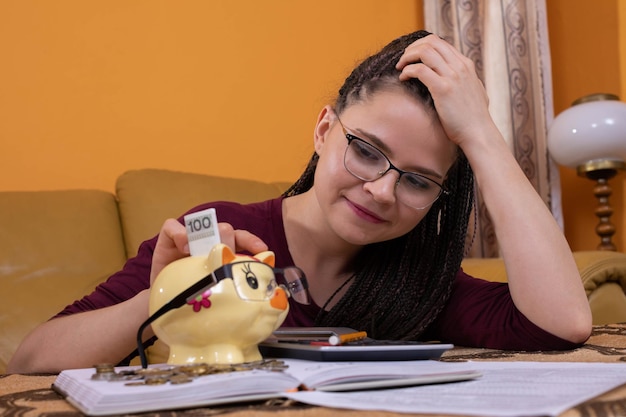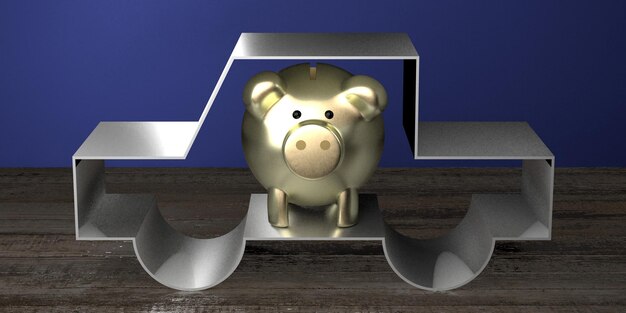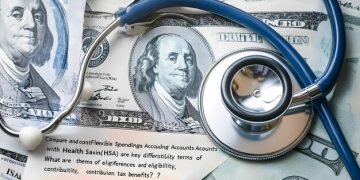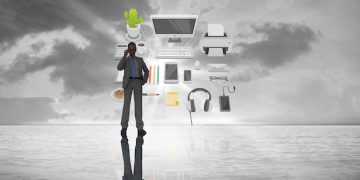Emergency Fund Essentials: How Much to Save in 2025

An emergency fund is vital for financial security, and in 2025, aim to save 3-6 months’ worth of living expenses to cover unexpected costs like job loss, medical bills, or car repairs, ensuring peace of mind.
Creating an emergency fund is a cornerstone of sound financial planning. But with the ever-changing economic landscape, how do you determine the right amount to save? Let’s explore the emergency fund essentials: how much do you really need in 2025?
What is an Emergency Fund and Why Do You Need One?
An emergency fund is a readily accessible savings account specifically designated to cover unexpected expenses. Life is unpredictable, and having a financial cushion can prevent you from going into debt when emergencies arise. This section explains what an emergency fund is and why it’s crucial for financial stability.
It’s the financial equivalent of having a first-aid kit – you hope you won’t need it, but you’re incredibly grateful when you do.
Defining an Emergency
It’s important to distinguish between true emergencies and expenses that can be planned for. A true emergency is an unexpected, unavoidable expense that requires immediate attention.
- Job Loss: Provides a financial buffer while you search for new employment.
- Medical Emergency: Covers unexpected medical bills or healthcare costs.
- Home Repair: Addresses urgent repairs needed to maintain a safe living environment.
- Car Repair: Funds necessary repairs to keep your vehicle operational for work or essential travel.
Having an emergency fund prevents small setbacks from becoming major financial crises. It allows you to handle surprises with confidence and peace of mind.
Calculating Your Monthly Expenses: A Detailed Guide
To determine the size of your emergency fund, you first need a clear picture of your monthly expenses. This section provides a step-by-step guide to calculating these expenses accurately.
Knowing your monthly expenses is the foundation upon which you build your financial security.

Tracking Fixed Expenses
Fixed expenses are those that remain relatively constant each month. These are easier to track since they don’t fluctuate much.
- Rent/Mortgage: Your monthly housing payment.
- Utilities: Costs for electricity, gas, water, and internet.
- Insurance: Premiums for health, auto, and home insurance.
- Loan Payments: Payments for student loans, car loans, or personal loans.
Adding up these fixed costs gives you a solid base for understanding your overall spending.
Accounting for Variable Expenses
Variable expenses are those that fluctuate from month to month. These require closer monitoring to get an accurate average.
- Groceries: Costs for food and household supplies.
- Transportation: Expenses for gas, public transport, or ride-sharing services.
- Entertainment: Spending on movies, dining out, or hobbies.
- Personal Care: Costs for haircuts, gym memberships, or clothing.
Tracking these variable expenses over a few months will give you a clearer understanding of your average monthly spending.
Once you’ve accurately calculated both fixed and variable expenses, you’ll have a solid understanding of your monthly financial obligations.
How Much Should You Save? The 3-6 Month Rule
A common guideline for emergency fund savings is the 3-6 month rule. This entails saving enough to cover three to six months’ worth of living expenses.
But why this range, and how do you determine where you fall within it?
Factors to Consider
Several factors can help you decide whether to aim for the lower or higher end of the 3-6 month range.
The 3-6 month emergency fund rule provides a flexible target, allowing you to tailor your savings to your individual circumstances and risk tolerance.
Adjusting for Economic Conditions in 2025
Economic conditions can impact how much you need in your emergency fund. In times of uncertainty, a larger fund can provide extra security.
In 2025, stay informed about economic trends to make informed decisions about your emergency fund savings.
Building Your Emergency Fund: Practical Steps
Once you know how much to save, the next step is to start building your emergency fund. This section offers practical steps to get you started.
Building an emergency fund doesn’t have to be overwhelming. With a strategic approach, you can make steady progress toward your savings goal.
Automate Your Savings
One of the most effective ways to build your emergency fund is to automate your savings. This involves setting up automatic transfers from your checking account to your savings account each month.
Automating your savings takes the guesswork out of saving and ensures you consistently contribute to your emergency fund.
Cut Unnecessary Expenses
Another way to boost your emergency fund savings is to identify and cut unnecessary expenses. This could involve reducing discretionary spending or finding cheaper alternatives for essential services.
Cutting unnecessary expenses frees up extra cash that can be directed toward your emergency fund.

Consider a High-Yield Savings Account
To maximize the growth of your emergency fund, consider storing it in a high-yield savings account. These accounts typically offer higher interest rates than traditional savings accounts, allowing your money to grow faster.
A high-yield savings account can help your emergency fund grow more quickly, providing an extra layer of financial security.
Building your emergency fund requires discipline and consistency, but the peace of mind it provides is well worth the effort.
Where to Keep Your Emergency Fund: Accessibility and Security
The ideal location for your emergency fund offers both easy accessibility and security. This section explores the best options.
Choosing the right place to store your emergency fund is essential for ensuring it’s available when you need it most.
High-Yield Savings Accounts
High-yield savings accounts are a popular choice for emergency funds due to their combination of accessibility and competitive interest rates.
- Easy Access: Funds can be easily accessed when needed.
- FDIC Insurance: Deposits are typically insured up to $250,000.
- Competitive Rates: Offer higher interest rates than traditional savings accounts.
High-yield savings accounts provide a safe and accessible way to store your emergency fund while earning interest.
Money Market Accounts
Money market accounts are another option to consider. These accounts typically offer higher interest rates than traditional savings accounts but may have certain restrictions.
- Higher Rates: Generally offer higher interest rates than regular savings accounts.
- Limited Transactions: May have restrictions on the number of withdrawals per month.
- FDIC Insurance: Deposits are typically insured up to $250,000.
Money market accounts can be a good option if you’re looking for slightly higher returns and don’t need frequent access to your funds.
When choosing where to keep your emergency fund, prioritize accessibility and security to ensure your funds are available when you need them most.
Maintaining and Replenishing Your Emergency Fund
Once you’ve built your emergency fund, it’s important to maintain it and replenish it after using it for an emergency. This section provides tips for keeping your fund in good shape.
Maintaining an emergency fund is an ongoing process that requires regular attention and adjustments.
Regularly Review Your Expenses
Periodically review your monthly expenses to ensure your emergency fund is still adequate. Life circumstances can change, and your expenses may increase or decrease over time.
Regularly reviewing your expenses helps you stay on top of your financial needs and adjust your emergency fund accordingly.
Replenish After Use
If you have to use your emergency fund, make it a priority to replenish it as quickly as possible. This will ensure you have a financial cushion in place for future emergencies.
Replenishing your emergency fund after use is crucial for maintaining your financial security.
| Key Point | Brief Description |
|---|---|
| 💰 3-6 Month Rule | Save 3-6 months of living expenses. |
| 📊 Track Expenses | Calculate fixed & variable monthly costs. |
| 🏦 High-Yield Account | Store fund in an accessible, secure account. |
| 🔄 Replenish Fund | Restore after use asap. |
[Título da seção FAQ em en-US]
What is considered a financial emergency?
▼
A financial emergency is any unexpected, unavoidable expense that requires immediate attention, such as a job loss, medical bill, or urgent home repair, which your regular income can’t cover.
▼
Generally, you should aim to save between 3 to 6 months’ worth of essential living expenses in your emergency fund, depending on your job security and risk tolerance.
▼
The best place is a high-yield savings account that offers easy access and FDIC insurance, ensuring your money is safe and accessible when needed during an emergency.
▼
To build your emergency fund quickly, automate savings, cut unnecessary expenses, and consider a side hustle to increase your income dedicated to savings regularly.
▼
If you use your emergency fund, make replenishing it a priority. Adjust your budget, cut expenses, and set up automatic transfers to ensure you rebuild your savings quickly.
Conclusion
Planning for the unexpected is a critical step in securing your financial future. By understanding the emergency fund essentials: how much do you really need in 2025?, calculating your expenses, setting savings goals, and choosing the right accounts, you can build a financial safety net that provides peace of mind and protects you from life’s uncertainties.





